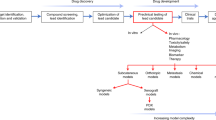Abstract
With an experimental model of spontaneous lung metastases in immunosuppressed newborn rats, seven clones and variants with different metastatic potential and gangliosides expression were derived from a single parental human melanoma cell line M4Be. The cellular radiosensitivity of M4Be and its seven sublines was estimated using an in vitro colony assay. The total amount of gangliosides in M4Be and its seven sublines was determined by cell extraction and thin-layer chromatography, while the expression of GD3 gangliosides was estimated by flow cytometry with a monoclonal antibody. The radiation-cell survival curves of most clones and variants derived from M4Be showed a zero dose extrapolation clearly lower than 100%, suggesting that two populations of cells of very different radiosensitivity coexist within each of these clones and variants. Although the proportion of radiosensitive cells could be estimated from the shape of the survival curve, its radiosensitivity is too high to be properly evaluated by the colony assay. The eight survival curves differ essentially in the proportion of radiosensitive cells--which varied from 0% to 40% among M4Be and its seven sublines--whereas the cellular radiosensitivity of the radioresistant population was similar among them. The metastatic potential in vivo of M4Be and its seven sublines was not significantly related to the cellular radiosensitivity of their corresponding radioresistant population, but significantly increased with the fraction of radiosensitive cells. This relationship is valid only when the highly metastatic cells are cultured for no more than five passages in vitro as the fraction of radiosensitive cells is rapidly lost during subcultures. The relationship remains valid in vivo as metastatic melanoma-bearing newborn rats whole body irradiated with 20 cGy show no lung metastasis compared with controls. The radiosensitive cell fraction is inversely correlated with both the total ganglioside content (r = 0.84, P < 0.02) and the number of cells positively labelled with the monoclonal antibody directed to GD3 (r = 0.92, P < 0.001). The incubation of a radiosensitive clone with the exogenous bovine brain ganglioside GM1 significantly increases the proportion of radioresistant cells and suppresses its metastatic potential, while the inhibition of the endogenous gangliosides synthesis in the radioresistant cell line M4Be increases the proportion of radiosensitive cells. This study provides a possible explanation for the correlation between the metastatic potential and the proportion of radiosensitive cells within the seven sublines derived from a single parental human melanoma cell line.
This is a preview of subscription content, access via your institution
Access options
Subscribe to this journal
Receive 24 print issues and online access
$259.00 per year
only $10.79 per issue
Buy this article
- Purchase on Springer Link
- Instant access to full article PDF
Prices may be subject to local taxes which are calculated during checkout
Similar content being viewed by others
Author information
Authors and Affiliations
Rights and permissions
About this article
Cite this article
Thomas, C., Buronfosse, A., Portoukalian, J. et al. The gangliosides as a possible molecular coupling factor between the proportion of radiosensitive cells in vitro and the metastatic potential in vivo within a human melanoma cell line. Br J Cancer 75, 639–649 (1997). https://doi.org/10.1038/bjc.1997.115
Issue Date:
DOI: https://doi.org/10.1038/bjc.1997.115
This article is cited by
-
Silencing of GM3 synthase suppresses lung metastasis of murine breast cancer cells
Breast Cancer Research (2008)



